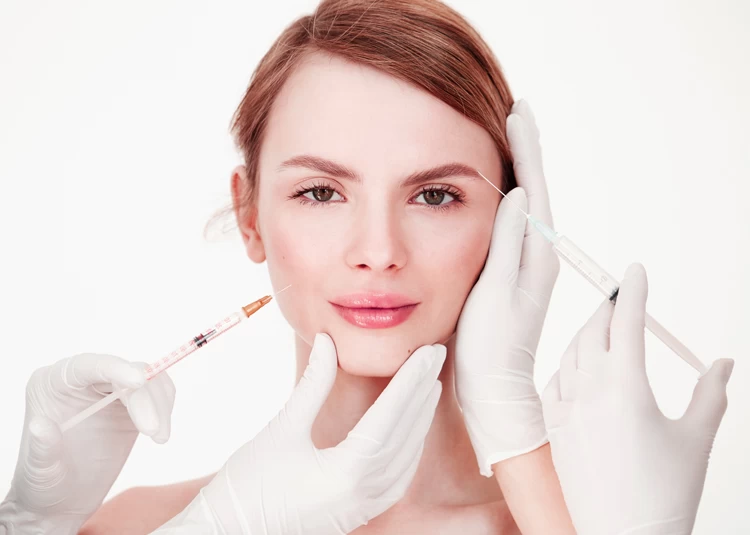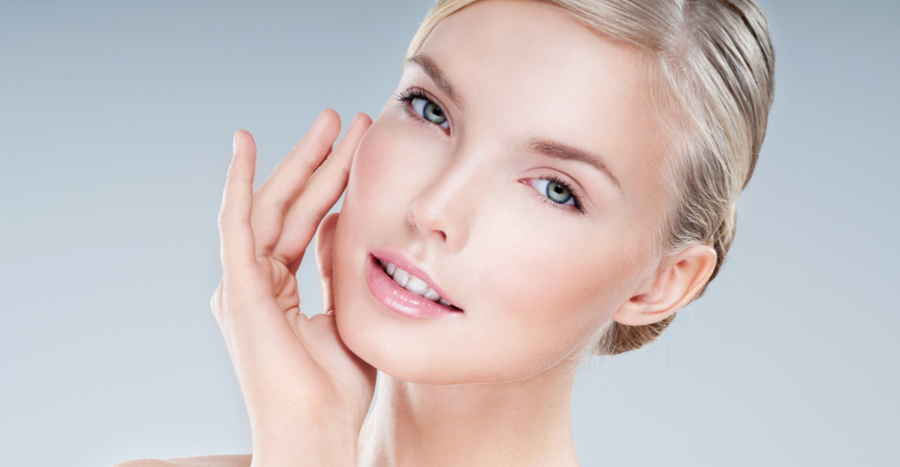Restylane stands at the forefront of cosmetic enhancements, offering a versatile solution for those aiming to rejuvenate their appearance. This clear gel formulation, based on hyaluronic acid, seamlessly integrates into the body, providing immediate results in reducing wrinkles and adding volume to facial features. Its application ranges from lip enhancement to smoothing out facial creases and even hand rejuvenation. With its safety profile backed by extensive clinical research, Restylane presents an appealing option for individuals seeking non-surgical aesthetic improvements. Understanding its benefits and potential applications can guide decisions towards achieving desired cosmetic outcomes.
Understanding Restylane’s Unique Properties
Natural Results
Restylane stands out due to its hyaluronic acid base. This substance is naturally found in the skin. It gives volume and hydration when injected.
The product aims for a natural look. Users can expect subtle enhancements, not drastic changes. This makes it a favorite among those seeking minor adjustments.
Delicate Areas
This filler excels in sensitive skin areas. The lips and under-eye regions are perfect examples.
Its gentle formula minimizes risks of irritation or adverse reactions. Therefore, Restylane is often chosen for these delicate zones.
-
Pros:
-
Ideal for sensitive areas.
-
Low risk of side effects.
-
-
Cons:
-
May require touch-ups.
-
Immediate Effects
Upon injection, results are visible right away. Users see increased volume and improved hydration in treated areas.
These benefits make Restylane popular for quick fixes before events or gatherings. However, longevity varies by individual metabolism rates.
Composition Differences Between Restylane and Other Fillers
NASHA Technology
Restylane stands out due to its NASHA technology. This method stabilizes hyaluronic acid particles. It ensures a natural look and feel under the skin.
Other fillers might not use this advanced technology. As a result, they can differ in consistency and effects.
Particle Size
The particle size in Restylane varies for targeted treatment areas. Smaller particles work well for fine lines. Larger ones are better for deep wrinkles or volume loss.
This is different from many other fillers that use uniform particle sizes. Such fillers may not be as effective in certain areas of the face.
Cross-Linking
Restylane has less cross-linking compared to some competitors. This affects both longevity and firmness of the filler once injected.
Fillers with more cross-linking can last longer but might feel firmer under the skin.
Pros of Restylane:
-
Natural look
-
Targeted treatment
-
Softer feel
Cons:
-
Shorter lifespan than some other fillers
-
Might require more frequent touch-ups
Restylane vs. Juvederm: Key Comparisons
Texture Differences
Restylane is known for its firmer texture. This makes it an excellent choice for sculpting and defining facial features. It’s particularly effective in areas that require precision, such as the cheeks or jawline.
Juvederm, on the other hand, has a smoother consistency. This property makes it ideal for treating fine lines and adding volume to lips or cheeks. Its smooth nature allows for a more subtle enhancement, providing a youthful appearance without looking overdone.
Lasting Periods
Restylane treatments typically last between 6 to 12 months before requiring touch-ups. This duration can vary based on several factors including the treatment area and individual metabolism rates.
Juvederm injections often provide results that can last up to a year or more. The longevity of Juvederm is partly due to its unique formulation of hyaluronic acid which integrates smoothly into tissue, maintaining volume and hydration over longer periods.
Both product lines offer solutions tailored toward different needs:
-
Restylane excels in creating definition and addressing moderate lines.
-
Juvederm shines.
Choosing between Restylane and Juvederm depends on specific aesthetic goals, desired lasting period, and personal preference regarding texture consistency. Consulting with a professional who understands these nuances ensures optimal outcomes tailored specifically to each individual’s features.
Effective Areas of Application for Restylane
Lip Enhancement
Restylane proves highly effective for enhancing the lips. It adds volume and smooths out lip lines. Many seek this treatment to achieve fuller, more defined lips.
Patients notice a significant reduction in vertical lip lines after treatment. The results bring a youthful appearance to the facial features, particularly around the mouth.
Facial Rejuvenation
This filler is optimal for treating nasolabial folds and marionette lines, common problem areas that deepen with age. By filling these folds, Restylane restores a smoother, more youthful complexion.
It’s also used under the eyes. This area, known as tear troughs, often shows signs of aging first. Treatment here can reduce dark circles and hollows, contributing significantly to facial rejuvenation.
Contouring & Rejuvenation
For those looking to enhance their facial contouring without plastic surgery, Restylane offers solutions. Cheek augmentation with this filler can create more pronounced cheekbones.
It’s suitable for hand rejuvenation. Aging hands regain their plumpness and lose visible veins and wrinkles post-treatment.
Duration and Results: Restylane vs. Other Fillers
Lasting Effects
Restylane, a popular hyaluronic acid dermal filler, offers significant benefits in cosmetic enhancement. It is known for its durability and effectiveness in various treatments.
The effects of Restylane typically last between 6 to 18 months. This range depends on the area treated. For example, lip augmentation might not last as long compared to treating marionette lines due to the lips’ frequent movements.
Maintenance Tips
To maintain results, consider touch-up treatments. These can help prolong the outcomes you desire from your initial filler treatment.
Areas with more movement may metabolize fillers faster. This includes places like the lips or areas used frequently when expressing emotions. A follow-up procedure within 6 to 9 months can keep your results fresh and lasting longer.
In comparison with other hyaluronic acid fillers, Restylane’s versatility stands out:
-
Effective for both fine lines and deeper wrinkles.
-
Suitable for lip enhancement and treating marionette lines.
-
Touch-ups are less frequent than some other options.
However, individual experiences vary:
-
Some people may find they need touch-ups sooner.
-
The exact duration of effects can be influenced by lifestyle factors such as sun exposure and smoking.
Side Effects and Safety Considerations
Common Side Effects
Patients often experience temporary side effects after Restylane treatments. These include redness, swelling, and bruising at the injection site. Most of these effects are mild and resolve within a few days.
The recovery time varies among individuals but is generally short. Minimal downtime means patients can return to daily activities quickly. However, avoiding strenuous exercise for 24-48 hours is advised to minimize swelling.
Rare Risks
Although uncommon, there are more serious risks associated with Restylane injections. Allergic reactions and filler migration represent rare complications that require immediate medical attention.
To reduce these risks, it’s crucial to disclose your full medical history during the consultation phase. This includes any known allergies or previous reactions to fillers or their components.
Importance of Consultation
Before undergoing treatment, a thorough consultation is essential. This step ensures that both patient and practitioner understand the individual needs and potential contraindications.
During this time, discussing all aspects of the procedure helps set realistic expectations about results and recovery time.
Cost Comparison and Value
Treatment Costs
The price of Restylane treatments varies. It depends on the area being treated but typically ranges between $400 to $800 per syringe. The cost is influenced by the specific needs of each person, including the volume required to achieve desired results.
In fact, when considering the price, it’s crucial to factor in how much product is needed for your treatment plan. Some people might need multiple syringes to get the look they want. This can make a big difference in total costs.

Market Position
Restylane stands competitively priced within its market. Its variety of formulas allows for tailored treatments that meet individual needs effectively.
The value comes from its durability over time compared to other products available on the market. Longevity means fewer treatments over time, which can lead to savings in the long run. In this way, while initial costs might seem high, Restylane offers good value due to less frequent need for reapplication.
Choosing the Right Provider for Restylane Injections
Training and Experience
Finding a provider with specific training in dermal filler injections is crucial. A skilled injector understands the nuances of facial anatomy. They know where to inject and how much product to use.
Providers should have extensive experience with cosmetic injectables, especially Restylane. This ensures they can tailor treatments to individual needs. Ask about their background in dermatology or plastic surgery.
Before-and-After Photos
Reviewing before-and-after photos of actual patients is essential. These photos showcase the provider’s work quality and style. Look for patients with similar concerns and goals as yours.
Photos also give insight into the provider’s expertise across different injection sites, including lips and cheeks.
Consultation Process
Ensure the provider offers a consultation before treatment. This meeting allows you to discuss your goals and expectations openly. It’s an opportunity to ask questions about the procedure, risks, and aftercare.
A good choice will listen carefully and suggest realistic outcomes based on your facial structure. They may also discuss using products with lidocaine for more comfortable injections.
Summary
Restylane emerges as a versatile and effective option for those seeking dermal filler treatments, offering distinct advantages in terms of composition, areas of application, and duration of results compared to its counterparts. Its unique properties, coupled with a comprehensive safety profile, make it a preferred choice for individuals aiming to enhance their appearance. The comparison with other fillers like Juvederm underscores Restylane’s value proposition, highlighting its efficacy in addressing various cosmetic concerns. Moreover, understanding the cost implications and selecting the right provider are crucial steps to ensure satisfaction and achieve desired outcomes.
As the landscape of cosmetic enhancements continues to evolve, Restylane stands out for its innovative approach to non-surgical rejuvenation. Individuals considering such treatments are encouraged to research extensively and consult with experienced professionals to make informed decisions. Embracing the potential of Restylane can lead to transformative results, empowering people to feel confident in their skin.
Frequently Asked Questions
What are the unique properties of Restylane?
Restylane is distinguished by its specific formulation of hyaluronic acid, designed to mimic the body’s own naturally produced substance, offering a natural look and feel post-injection.
How does Restylane differ in composition from other fillers?
Restylane utilizes a non-animal stabilized hyaluronic acid (NASHA) technology, making it distinct from other fillers that might use animal-derived substances or different formulations of hyaluronic acid.
In what ways is Restylane different from Juvederm?
While both are based on hyaluronic acid, Restylane typically provides a firmer consistency and may last slightly longer in certain treatment areas compared to Juvederm. The choice between them often depends on the desired outcome and area treated.
What are effective application areas for Restylane?
Restylane is effectively used for smoothing wrinkles, enhancing lips, correcting deep folds around the mouth (nasolabial folds), and under-eye hollows. It’s also applied in cheek augmentation and hand rejuvenation.
How do duration and results compare between Restylane and other fillers?
Restylane generally offers lasting results ranging from 6 to 18 months depending on the product line within its family. This duration can be comparable or slightly longer than some other hyaluronic acid-based fillers depending on treatment areas.
What side effects should one consider with Restylane injections?
Common side effects include temporary redness, swelling, pain at injection sites, bruising, headache, and tenderness. These typically resolve within days to weeks after treatment.
How does cost comparison work between Restylane and other filler treatments?
Cost varies widely based on geographical location, provider expertise, amount of product used but tends to be competitive with similar products like Juvederm. Patients should consult providers for detailed pricing relative to their specific needs.



